Хизматрасонии пас аз фурӯш
Бо истифода аз дастур ва роҳнамо пешниҳод кунед.
Мӯҳлати кафолати 1 сол. Пас аз гирифтани мол, муштарӣ метавонад барои хидматрасонии пас аз фурӯш бо мо тамос гирад, агар ягон мушкилот вуҷуд дошта бошад.
Агар маҳсулот пас аз қабул тасдиқ карда шуда бошад, аммо ҳангоми истифода мушкилии таҳаммулпазирӣ дошта бошад, мо инчунин метавонем калибркунии ройгонро пешниҳод кунем, фармоишгар бояд арзиши интиқолро пардохт кунад.
Аз рӯи хусусияти вазнҳо, танҳо синфи F2 /M1 ё камтар метавонад 2 бошадndкалибровка карда шудааст.
Ҳолатҳо
Мизоҷи зебои мо, ки тарозуи мошини зиддилағзишро харидааст ва аксҳои худро бо молҳои мо ба мо фиристад. Ташаккур барои эътимод ва фикру мулоҳизаҳои нек.
*Вазнҳои калибркунӣ барои ҳисобкунаки намӣ
Ҳисобкунаки намӣ дар лаборатория ё раванди истеҳсолӣ ба таври васеъ истифода мешавад, ки бояд миқдори намиро зуд чен кунад. Ба монанди саноати дорусозӣ, саноати хӯрокворӣ, саноати кимиё, кишоварзӣ ва ғайра.
Ҳисобкунаки намиро бо вазн чӣ гуна калибр кардан мумкин аст?
Тугмаи ZERO-ро дар ҳолати 0,00 г нигоҳ доред.
Вақте ки экран медурахшад, вазни 100 граммро ба табақи намуна бо нарм гузоред. Қимат тезтар медурахшад, пас интизор шавед, ки хондан дар соати 100.00 қатъ шавад.
Вазнро хориҷ кунед, ба ҳолати санҷиш баргардед, раванди калибрченкунӣ анҷом дода мешавад.
Ҳисобкунаки нави намӣ бояд пеш аз истифода калибровка карда шавад. Вақте ки он зуд-зуд истифода мешавад, он гоҳ инчунин бояд зуд-зуд калибровка карда шавад. Интихоби вазнҳои дуруст аз рӯи дақиқии ҳисобкунаки намӣ барои калибрченкунӣ муҳим аст. Дар ин ҷо маслиҳат гиред.
*Вазнҳои калибркунӣ барои тарозуҳои электронӣ
Умуман, тарозуҳои электронӣ бояд бо 1/2 ё 1/3 диапазони пурраи тарозуҳо калибр карда шаванд. Раванди калибрченкунии стандартӣ чунин аст:
Тарозуро даргиронед, 15 дақиқа гарм кунед ва 0 бит калибр кунед. Пас аз он вазнҳоро барои калибрченкунӣ бо пайдарпай истифода баред, ба монанди 1кг/2кг/3кг/4кг/5кг, хонишро ба ҳамон вазни вазн нигоҳ доред, раванди калибрченкунӣ анҷом дода мешавад.
Тарозуҳои гуногун ба синфҳои гуногуни вазнҳо ниёз доранд:
Мувозинат бо таҳаммулпазирии 1/100000 ва миқёси ҳадди аққал 0,01 мг тавозуни сатҳи аъло аст. Он бояд бо вазнҳои E1 ё E2 калибр карда шавад.
Мувозинат бо таҳаммулпазирии 1/10000 ва миқёси ҳадди аққал 0,1 мг барои калибрченкунӣ вазнҳои E2-ро истифода мебарад.
Мувозинат бо таҳаммулпазирии 1/1000 ва миқёси ҳадди ақали 1 мг барои калибрченкунӣ вазнҳои E2 ё F1 истифода мешавад.
Мувозинат бо таҳаммулпазирии 1/100 ва миқёси ҳадди аққал 0,01g барои калибрченкунӣ вазнҳои F1-ро истифода мебарад.
Миқёси таҳаммулпазирии 1/100 ва миқёси ҳадди аққал 0,1 г барои калибрченкунӣ вазнҳои M1-ро истифода мебарад.
Тарозуҳо ва тарозуҳо метавонанд аз рӯи арзиш ва вазнҳои мувофиқ мувофиқ карда шаванд.
* Санҷиши боркунии лифт
Ин як усули маъмул барои санҷиши боркунии лифт мебошад. Санҷиши омили тавозунии лифт инчунин бояд вазнҳоро истифода барад. Омили мувозинати лифт яке аз параметрҳои муҳимтарини лифтҳои кашишӣ ва параметри муҳими бехатар, боэътимод, бароҳат ва каммасраф будани лифт мебошад. Ҳамчун вазифаи муҳим, санҷиши омили тавозун ба лоиҳаи санҷиши қабул дохил карда шудааст. Барои санҷиши лифт вазнҳои оҳании 20 кг "вазни росткунҷа" (вазнҳои стандартии M1 OIML) бо таҳаммулпазирии 1 г истифода мешаванд. Умуман, ширкатҳои элеваторӣ бо вазнҳои хурди оҳании аз 1 тонна то чанд тонна муҷаҳҳаз хоҳанд кард.
Институти азназаргузаронии тачхизоти махсус инчунин бояд барои азназаргузаронии лифтхо вазнхои чуянро истифода барад. Андозаҳои маъмул инҳоянд: вазнҳои оҳании 20 кг (барои қулай, бардоштан қулай) ва дуюм, баъзе воҳидҳои санҷишӣ навъи 25 кг оҳанро интихоб мекунанд.
* Калибрченкунии тарозуи вазнин/тарозуи боркаш
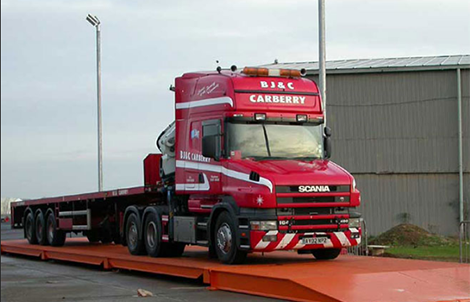
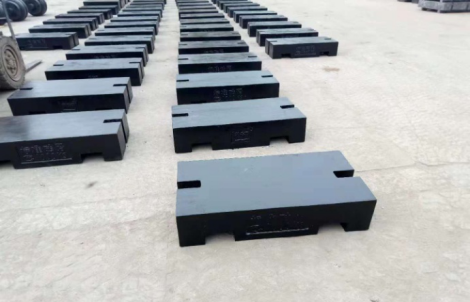
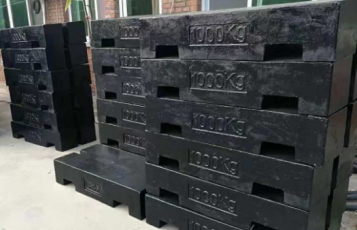
*Усулҳои калибрченкунӣ
Калибрченкунӣ дар кунҷҳо: Вазнро бо арзиши 1/3X интихоб кунед (ба ҷои иқтидори умумии тарозуи X), онро дар чор кунҷи платформа ҷойгир кунед ва алоҳида вазн кунед. Хониши чор кунҷ аз таҳаммулпазирии иҷозатдодашуда баромада наметавонад.
Калибркунии хатӣ: Вазнҳоро дар 20% X ва 60% X интихоб кунед, онҳоро дар маркази тарозуи алоҳида ҷойгир кунед. Пас аз муқоисаи хониш бо арзиши вазнҳо, инҳироф набояд аз таҳаммули иҷозатдодашуда зиёд бошад.
Калибрченкунии хатӣ: Вазнҳои 20% X ва 60% X -ро интихоб кунед, вазни стандартиро дар маркази тахтаи тарозуи тарозу ҷойгир кунед, алоҳида вазн кунед ва хониш бояд бо вазни стандартӣ муқоиса карда шавад. Инҳироф набояд аз хатогиҳои иҷозатдодашуда зиёд бошад.
Калибрченкунии арзиши намоиш: Иқтидори миёнаи пурраи вазнро ба 10 қисм баробар кунед, арзиши стандартиро мувофиқи он муқаррар кунед, вазни стандартиро дар маркази тарозу ҷойгир кунед, пас хонишро сабт кунед.
*Калибровкаи тарозуи чорво
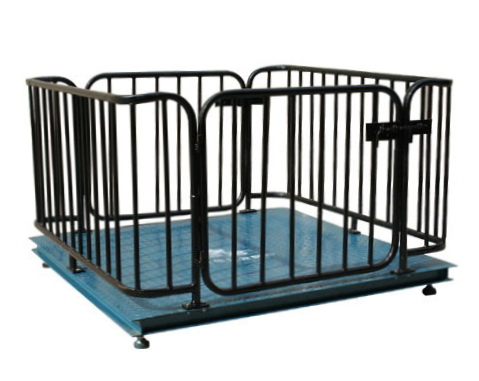
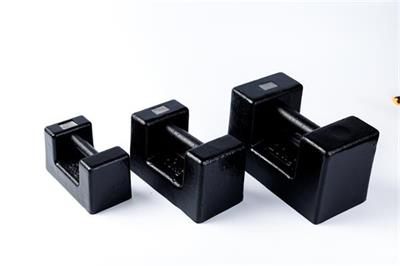
Барои баркашидани чорво тарозуи чорво истифода мешавад. Барои дуруст нигох доштани тарозухо тарозуи чорворо бо вазнхои чуянй калибровк кардан мумкин аст.
* Тарозуи мошини паллет
Он дар мошини боркаши дастӣ ва тарозуи якҷоя муттаҳид карда шудааст. Бо тарозуи мошини боркаш ҳамзамон интиқол ва вазн кардан мумкин аст. Логистикаи дохилии худро бо арзиши камтар самараноктар кунед.
* Тарозуи кран
Тарозуи кран барои баркашидани бори овезон, ки дорои диапазон ва иқтидори вазнашон гуногун аст, ҳалли масъаларо пешниҳод мекунанд, ки чӣ гуна бори ғайристандартиро дар шароити саноатӣ баркашанд. Одатан дар саноати пӯлод, металлургия, фабрикаҳо, конҳо, стансияҳои боркаш, логистика, савдо, устохонаҳо ва ғайра истифода мешаванд, аз қабили борбардорӣ, борфарорӣ, ва ғайра. тарозуҳои кранҳои рақамӣ аз 100 кг то 50 тонна иқтидор дастрасанд





